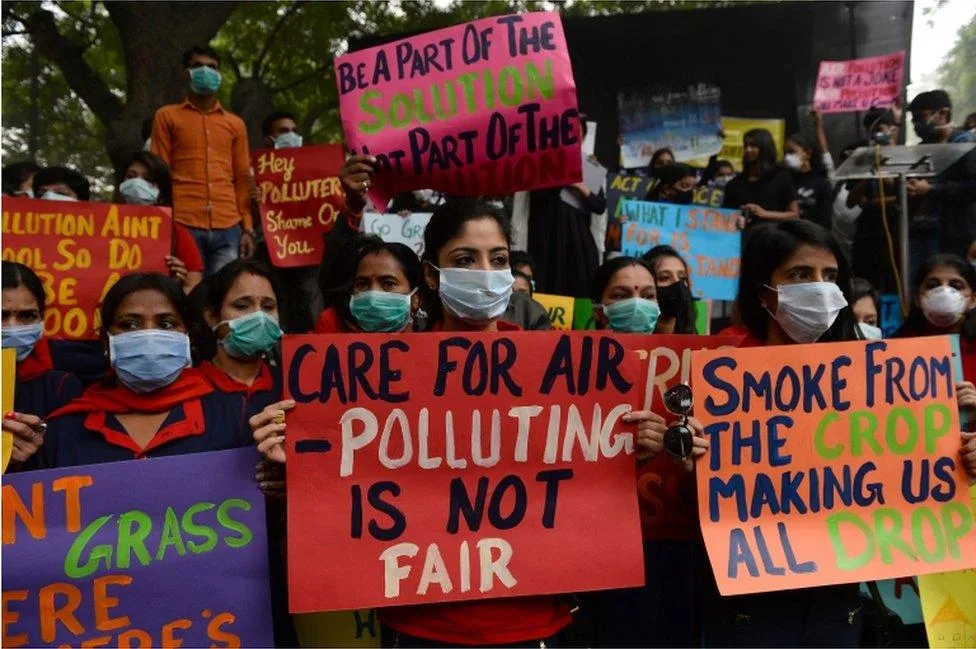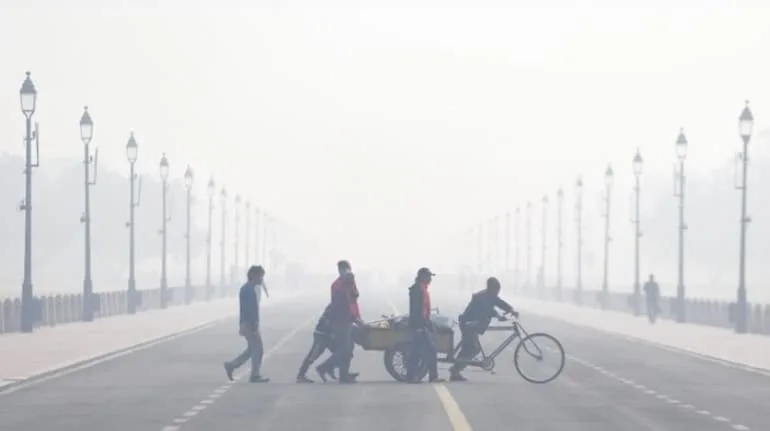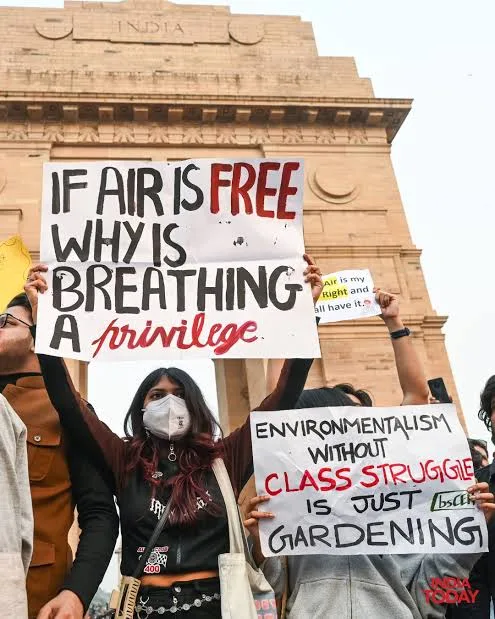The recent public outcry over air pollution in Delhi was crystallised when Rahul Gandhi accused the Bharatiya Janata Party (BJP)-led central government of staying silent as the city choked. Reports show that even as the Air Quality Index (AQI) soared to between 366 and 400+, dozens of monitoring stations breached the “severe” threshold, with readings in suburbs like Anand Vihar, Ashok Vihar and Narela comfortably above 400.
Yet the tone from the top has been one of minimal urgency. The political narrative emphasises a few temporary measures, a “work-from-home order”, a ban on certain vehicles or construction, as proof that action is being taken. That veneer of responsiveness matters. It allows the government, both at the Centre and in the Government of National Capital Territory of Delhi (GNCTD), to project that they are “on top” of the problem while avoiding deeper structural reforms.

Even when citizens, including mothers, children and students, mobilise for their right to breathe, as happened in a rare protest near India Gate, the state response has been swift suppression. Dozens were detained for attempting to draw attention to what many called a “health emergency.” Worse, the moment the protest became embarrassing, the authorities emphasized law-and-order over air quality, labelling demonstrators “professional protesters” or invoking the “urban-Naxal” narrative.
This reflects a pattern: when protests are inconvenient, governments either co-opt, criminalise or marginalise them, rather than respond to the underlying grievance.

That’s precisely what appears to be happening with Delhi’s pollution crisis.
Temporary fixes, not structural solutions
In mid-November 2025, as Delhi’s air quality deteriorated drastically, the GNCTD enforced Stage 3 of the Graded Response Action Plan (GRAP), triggering a 50% mandatory “work-from-home” order for government and private offices. The strategy was likely meant to reduce vehicular movement and thereby cut emissions.
However, this relief was short-lived. Within two weeks, as the sub-committee of the Commission for Air Quality Management (CAQM) declared air quality “improved” (AQI ~ 327), Stage 3 curbs were revoked. Work-from-home policies were withdrawn and offices reverted to full strength; hybrid schooling was discontinued; construction and older diesel-vehicle restrictions were lifted.
What remains is Stage 1 and 2 restrictions, virtually business as usual. In effect, a formal “emergency response” evaporates just as quickly as political embarrassment.
Why governments stay “unperturbed” despite protests and bad air
At first glance, this seems counter-intuitive. Why would a government risk public anger, health criticism or even electoral backlash by refusing long-term solutions? Several strategic incentives explain this behaviour:

Short political memory + annual problem cycles
The air-pollution spike in winter has become a predictable, recurring phenomenon. Treating it as a seasonal event allows political leadership to treat it as a cyclical problem, to issue short term orders when AQI spikes, then pretend improvement when seasonal winds shift or rains come. This makes long-term complacency politically viable, even electorally.
Visible optics over structural change
A 50% WFH order, occasional cloud-seeding, or spot-bans on polluting vehicles offer visible action. They can be packaged as “we took immediate steps,” even if they don’t alter long-term pollution dynamics. That optics-over-outcome strategy shields governments from blame.
Avoiding economic and political cost
Long-term solutions, curbing construction dust, managing vehicular emissions, regulating stubble burning, reimagining urban planning, would require major, sustained intervention. That could threaten powerful interest groups (construction, real estate, industries), provoke economic cost, and stir investor or business discontent. So even if those reforms are in public interest, political survival calculations work against them.

Divide-and-discredit tactics for dissent
When citizens protest, the state often reacts with a law-and-order approach, detentions, invoking extremist-influence narratives, arrests, to discredit and fragment the movement. This reduces public pressure for real reform. The recent pollution protest was painted as hijacked by elements carrying pro-Maoist posters. Once the movement is delegitimised, the moral force of the plea fades.
Low electoral risk among privileged/urban middle class
Many of the city’s affluent and middle-class residents can afford air purifiers, good masks, private transport or even seasonal migration, insulating them from the worst of smog. The political cost of ignoring low-income communities (who suffer the most) remains relatively low. As long as public anger remains fragmented or sporadic, the voter base remains stable.
What this pattern reveals about governance priorities
The recent sequence of events in Delhi reveals a larger truth: in the eyes of governing elites, environmental crises like pollution are not treated as civic emergencies demanding structural correction; they are managed as temporary political nuisances.

Protests that threaten to mobilise broad cross-sections of society are swiftly suppressed or co-opted. Real reforms, tighter emissions regulation, reworked urban planning, accountability for industrial sources, long-term public transport solutions, are sidelined. Meanwhile, the cycle repeats each winter, with citizens left gasping.
In practice this means the democratic contract between the state and citizenry, the promise of safety, of breathing clean air, remains broken. Instead of ownership, there is obfuscation; instead of prevention, a reactive optics show.
As a journalist and observer of power, I see this as symptomatic of a deeper malaise: when governance becomes performance-driven and optics-obsessed, structural reform, especially around issues that challenge powerful interests, loses out.
If this continues, use of “work-from-home orders”, temporary curbs and occasional protests will be the norm. And Delhi will remain a city where breathing itself becomes a political act.


